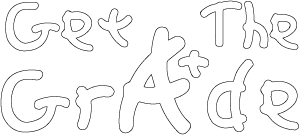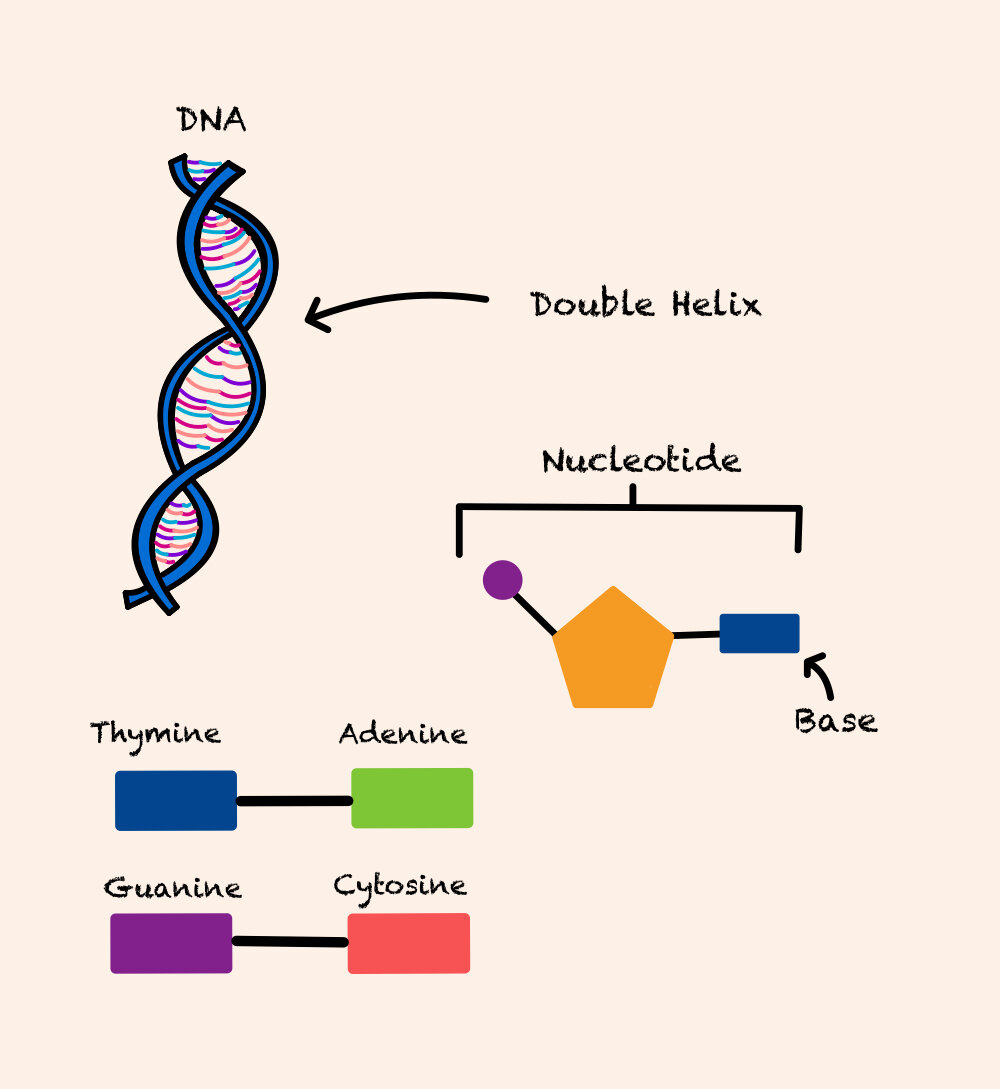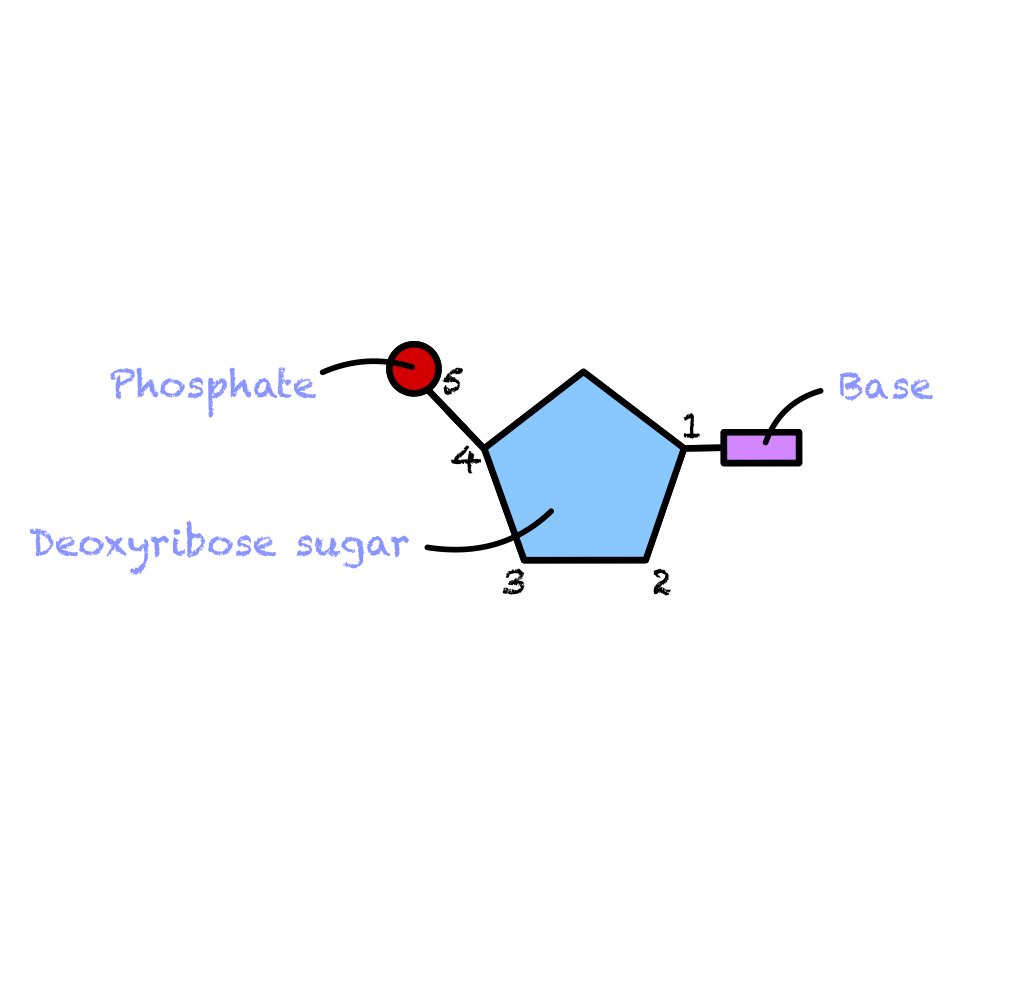DNA Structure
To kick off the Higher Biology course we are going to start with the building blocks, of the building blocks, of the building blocks that make us, us.
DNA is the code that makes us the people that we are. It encodes the cells to do their jobs to form wonderful monstrosities such as humans and onions.
So, let’s talk about what the individual ‘1s’ and ‘0s’ are that make up the code of the DNA structure.
Bases and Nucleotides
Key National 5 revision:
DNA (deoxyribonucleic acid) is the code within the nucleus that allows cells to function and replicate.
If you look at a DNA molecule, it has what is called a double helix structure, as shown in the diagram.
The individual units of DNA are called nucleotides. Each nucleotide has a section called a base, as shown in the diagram. These nucleotides are lined up in the two strands of the DNA structure, creating the double-helix.
There are four DNA bases: Thymine (T), Adenine (A), Cytosine (C) and Guanine (G). The two strands of DNA making up the double-helix are held together by base pairs. Thymine (T) is always paired with Adenine (A). Cytosine (C) is always paired with Guanine (G). Base pairs are said to be complimentary to one another.
These base pairs make up a very long and variable genetic code within DNA, with the only variation being the order of the bases.
The nucleotide
Shown is a more detailed diagram of a nucleotide, the individual unit of DNA. It contains a PHOSPHATE, DEOXYRIBOSE SUGAR and a BASE.
The numbers on the diagram represent the carbon atoms in the nucleotide molecule. It is crucial that we number these molecules for us to know in which direction the nucleotides join to form the DNA molecule.
We say that “Nucleotides join in a 5’ to 3’ direction”. This is said aloud like: “5 prime to 3 prime” direction, meaning that the 3’ end of the molecule binds to the 5’ (phosphate part) end of the next nucleotide during DNA replication. This will become more obvious when we discuss replication in the next section.
Here are some definitions of different important structures involved in DNA replication:
The enzyme that joins nucleotides together during DNA replication is DNA polymerase.
A primer is a short complementary sequence of nucleic acid that starts DNA replication.
The enzyme that links fragments of DNA together is Ligase.
Prokaryotes and Eukaryotes
Prokaryotes and Eukaryotes are different types of organisms, separated by the way in which their DNA is organised within their cells.
In prokaryotes, DNA is condensed into a circular structure called a nucleoid, which is not contained within a nuclear membrane. Prokaryotes can also contain DNA in small circular chromosome. A bacterium is an example of a prokaryote.
In eukaryotes, DNA is condensed into linear chromosomes, which lie within a nuclear membrane. Circular chromosomes are found in chloroplasts and mitochondria. Multicellular organisms like animals, plants and fungi are eukaryotes.
Key Points!
-
DNA
DNA is the genetic code that controls cells.
-
DNA structure
DNA are made up of nucleotides
Nucleotides have a base, which is either adenine (A), cytosine (C), guanine (G) or thymine (T).
DNA has a double helix structure.
-
Genes
Genes are sections of DNA that code for specific proteins.
Proteins are made up of amino acids.
-
RNA
RNA copies genetic code from DNA and carries it from the nucleus to the ribosome in the cytoplasm. This is where the RNA codes for a specific chain of amino acids.



